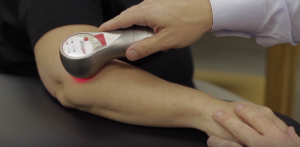 One of the downsides and risks of playing sports is getting injured. In fact, professional athletes know that their careers will eventually be much shorter than those who do office work. This is either because they are no longer at the peak of health and performance, or because an injury prevents them from playing.
One of the downsides and risks of playing sports is getting injured. In fact, professional athletes know that their careers will eventually be much shorter than those who do office work. This is either because they are no longer at the peak of health and performance, or because an injury prevents them from playing.
After all, sports injuries are much worse than ordinary ones. Athletes have to perform at a high level and train constantly, keeping the demand on their bodies high. This brings much more and consistent stress on their joints, bones, and muscles, sometimes all the way to their limit. Fortunately, most professional athletes and sports teams take great care of their players, making sure that medical professionals and other experts support them and as much as possible, prevent injury.
Non-professional athletes also need to have access to such help. Thankfully, the best physiotherapist in Werribee – Wyndham Physio and Rehabilitation has the qualifications, background, and experience dealing with sports injuries. Beyond this, they can also educate athletes on how to prevent injury in the first place or even to improve their performance. They can also work with all sportsmen/women, regardless which sport they play and regardless of the level of competition.
Sports physiotherapists deal with all kinds of injuries, from muscle strains or ligament sprains, all the way to dislocations and even fractures. Naturally, the treatment will depend on the kind of injury, however, the patient is always a part of the decision-making process. They always have a say on the approach and intervention that the clinic will use. The physiotherapist will be there at every step of the way, monitoring progress and guiding the rehabilitation process.
As an athlete, I had personally experienced working with the sports physiotherapist in Wyndham Physio and Rehabilitation. When I had an injury while playing football, I made an appointment immediately for treatment. First of all, I was not sure how bad it really is, and I wanted to be treated by a professional who will make sure that my body heals correctly. I also wanted to be able to play again after the accident, so I wanted to be able to train slowly back to playing.
On the first appointment, the focus is identifying the injury. The physiotherapist interviewed me on what led to the injury, as well as other relevant information like my medical history. In order to fully pinpoint the extent of the damage, a physical evaluation was also done, and the body part was examined.
After the exam, a treatment plan will be created, incorporating as well my goals. As mentioned before, I wanted to be able to fully heal and be able to go back to playing sport as soon as possible. Together, we discussed different options and agreed on the right approach for me. These plans are always personalized, because each patient has a different injury and at the same time, unique goals.
Still, there are several treatments that are quite normally used by sports physiotherapists:
- TENS
TENS is the acronym for transcutaneous electrical nerve stimulator. This is a small device that delivers a low current of to the skin over the injured part. It brings a tingling sensation and will help relieve pain.
- Ultrasound
This machine brings sound vibrations to tissues. The ultrasound heats deeper tissues to soften them or to help them heal.
- Massage
Also called soft tissue mobilization, your physiotherapist will use his/her hands to loosen tight muscles, reduce swelling and tissue adhesions, and relieve patients from pain.
- Stretching
After an injury, many athletes become less mobile and inactive. Over time, muscles become tight, so stretching is done to loosen them. Using either manual stretching by the physiotherapist himself/herself or through self-stretching exercises, the range of motion (ROM) can be improved again.
- Range Of Motion Exercises
These exercises work to improve or at least, keep your current joint range of motion. Moreover, stiff joints and muscles can be avoided.
- Strengthening Exercises
Beyond losing range of motion, muscles become weak when they are not being used or trained. Strengthening exercises will keep other muscles worked out and at the same time, make weakened or injured ones stronger.
- Patient Education
Although exercises will also be done at the physiotherapy clinic, they will also teach you how to work out at home. Not only does it allow you to continue after the treatment, they might also be necessary to make the recovery shorter. Therefore, they will educate you on your injury and what exercises can be done to keep the area strong. Moreover, if the injury is because of wrong movements, they will teach you the right way that will avoid future damage. Even self-treatment and other ways to prevent future injuries will be included.
For athletes, injury happens more often and might be worse than for those who do not play sport and put their bodies in so much stress and strain. It is therefore even more vital to always turn to those who are experts in the way bodies move when any damage happens. This is the only way to make sure that proper healing happens and that athletes are able to perform the same or even better after the accident.
